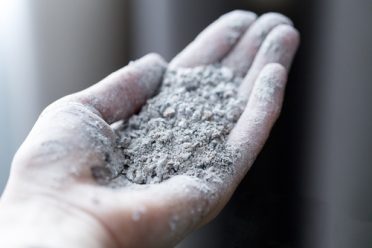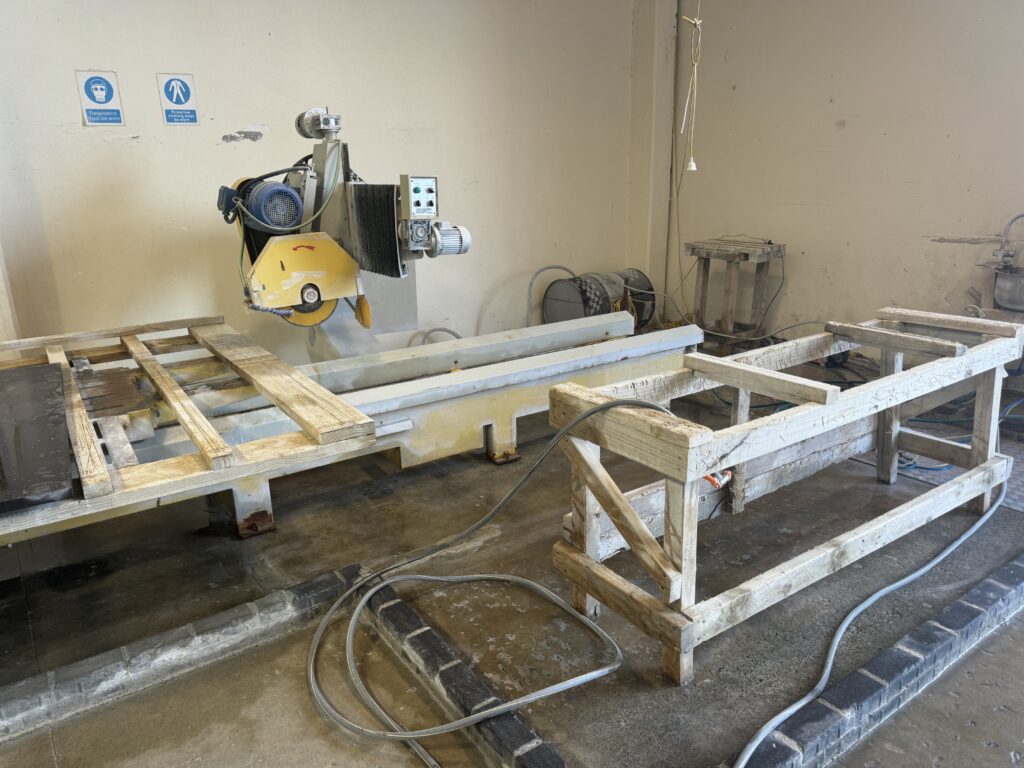Silica Assessments
Respirable crystalline silica (RCS) is a fine dust generated when materials containing silica — such as concrete, stone, mortar, bricks, ceramics, and engineered stone — are cut, ground, drilled, or otherwise disturbed.
When inhaled, these microscopic particles can travel deep into the lungs and cause irreversible, life-threatening diseases, including:
- Silicosis – preventable but incurable and often fatal
- Lung cancer
- Chronic obstructive pulmonary disease (COPD)
- Kidney disease

- About The Service
Where Does RCS Come From?
Respirable crystalline silica (silicon dioxide, SiO₂) is one of the most common naturally occurring minerals and is a key component in many construction and manufacturing materials. It is released into the air when these materials are cut, ground, drilled, or otherwise disturbed.
Common sources of silica dust include:
- Sand, concrete, and stone
- Mortar, bricks, and ceramics
- Glass and pottery
- Man-made stone benchtops
Our testing solutions enable you to:
- Detect RCS levels early, before they become hazardous
- Protect your team from long-term health risks
- Ensure compliance with WorkSafe NZ standards
- Foster a safer, healthier workplace culture
- Avoid costly fines and legal repercussions
Common Materials Containing Silica
- Concrete & Mortar
- Stone & Bricks
- Sand & Tiles
- Glass & Ceramics
- Engineered Stone Benchtops
- Fibre Cement Boards

High-Risk Industries & Activities
If your team works in quarrying, mining, construction, manufacturing, or stone fabrication, you’re at increased risk. Activities such as cutting, grinding, or abrasive blasting can expose workers to dangerous silica dust. That’s where Aerem’s expertise comes in.
Tailor-Made Assessments
All assessments are customised based on your specific needs. We’ll provide a clear quote before beginning any work, ensuring you know exactly what to expect.
Legal Compliance Made Easy
Under the Health and Safety at Work (General Risk and Workplace Management) Regulations 2016, PCBUs (Persons Conducting a Business or Undertaking) have a legal duty to:
- Manage hazardous substance risks and ensure workers are not exposed above the prescribed Workplace Exposure Standard (WES).
- Monitor exposure where there is uncertainty about levels in the workplace.
From November 2023, WorkSafe halved the WES for RCS from 0.05 mg/m³ to 0.025 mg/m³ (WES Edition 14.1), in line with global best practice such as the American Conference of Governmental Industrial Hygienists (ACGIH) recommendations
Our Comprehensive Silica Dust Testing Services:
- Personal Exposure Monitoring (worker breathing zones)
- Certified Laboratory Analysis
- Dust Concentration Reports
- Regulatory Compliance Assessments
- Safety & Control Recommendations

- Pricing
Transparent Pricing & Tailored Solutions
All assessments are customised based on your specific needs. We’ll provide a clear quote before beginning any work, ensuring you know exactly what to expect.
RCS Assessments
Price On Scope of Works
RCS (Bulk Sample)
Price Dependent on Analysis Type
- How It Works
Our Process
1.
Consultation
2.
Exposure Monitoring
3.
Lab Analysis
4.
Clear Reporting
5.
Actionable Guidance
6.
Ongoing Support
Need follow-up testing, health monitoring, or safety upgrades? We’re here to help every step of the way.
FAQs
What is respirable crystalline silica (RCS)?
RCS is a fine, airborne dust generated when materials containing crystalline silica — such as concrete, stone, mortar, and engineered stone — are cut, drilled, ground, or disturbed. The particles are so small they can penetrate deep into the lungs.
Why is RCS dangerous?
Inhalation of RCS can cause permanent lung damage and life-threatening diseases including:
Silicosis (preventable but incurable)
Lung cancer
Chronic obstructive pulmonary disease (COPD)
Kidney disease
What is the current Workplace Exposure Standard (WES) for RCS in New Zealand?
As of November 2023, WorkSafe NZ has set the WES for RCS at 0.025 mg/m³ (halved from 0.05 mg/m³). This limit is in line with global best-practice recommendations.
Who is at risk of silica dust exposure?
Workers in industries such as:
Construction and demolition
Masonry, concrete, and stone fabrication
Tiling, flooring, and roofing
Foundries and glass manufacturing
Pottery, ceramics, and brick production
How can I tell if my workplace is over the limit?
The only way to be certain is through exposure monitoring — collecting air samples in the worker’s breathing zone and analysing them in a IANZ-accredited laboratory.
What are my legal responsibilities as a PCBU?
Under the Health and Safety at Work (General Risk and Workplace Management) Regulations 2016, you must:
Ensure workers are not exposed above the WES.
Conduct exposure monitoring if there is uncertainty.
Implement controls to eliminate or minimise exposure.
How can silica exposure be controlled?
Common control measures include:
Wet cutting and dust suppression systems
On-tool dust extraction
Local exhaust ventilation (LEV)
Enclosed, automated processes
Respiratory protective equipment (RPE)
How can Aerem help?
We offer:
Silica dust risk assessments
Personal and static air monitoring
Compliance reporting
Practical control recommendations
Training and awareness sessions
Your trusted silica dust safety experts
Ready to create a safer workplace and ensure compliance?
